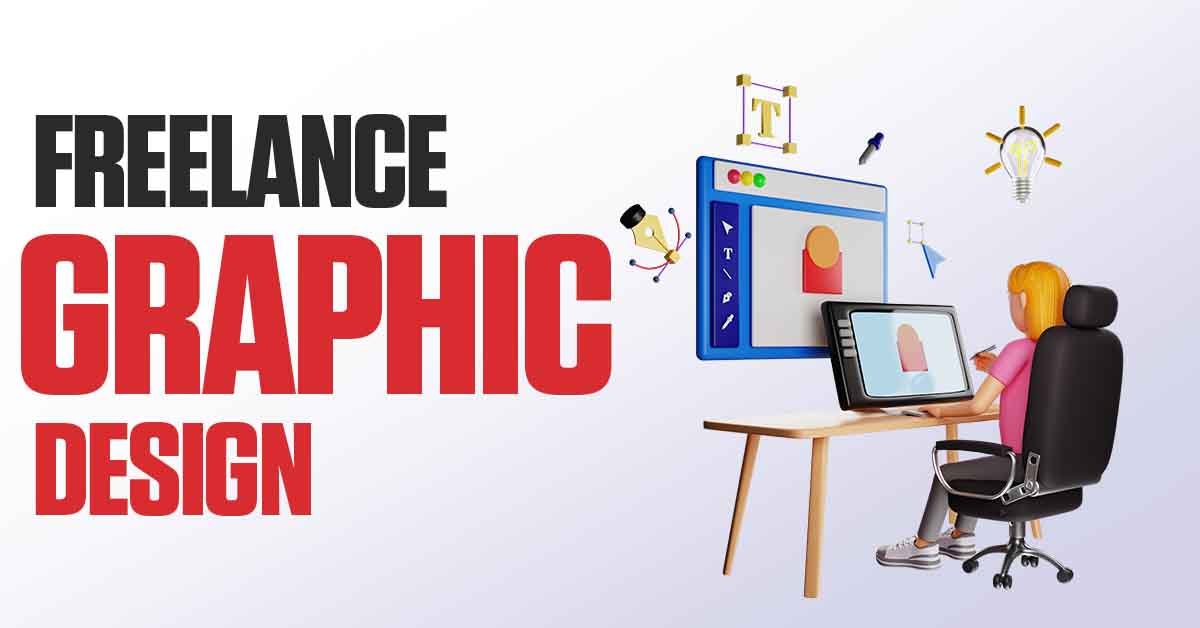Freelance graphic design offers creative professionals the opportunity to work independently, set their own schedules, and build their own brands. However, launching and growing a successful freelance graphic design business requires more than just design skills. It involves strategic planning, effective marketing, and a solid understanding of business management. This detailed guide will walk you through the steps to start and grow your freelance graphic design business.
Why Choose Freelance Graphic Design?
Freelancing in graphic design comes with numerous benefits:
- Flexibility: Set your own hours and work from anywhere.
- Variety: Work on diverse projects for different clients.
- Control: Choose the clients and projects that interest you.
- Potential Earnings: Unlimited income potential based on your effort and skills.
Starting Your Freelance Graphic Design Business
1. Develop Your Skills
Before launching your business, ensure your design skills are top-notch. Consider the following:
- Education: Take courses in graphic design, either online or at a local institution.
- Practice: Continuously work on projects to hone your skills.
- Stay Updated: Keep up with the latest design trends and tools.
2. Create a Business Plan
A solid business plan sets the foundation for your freelance career:
- Define Your Niche: Identify the type of design work you want to focus on (e.g., branding, web design, illustration).
- Target Market: Determine who your ideal clients are and where to find them.
- Goals: Set short-term and long-term business goals.
- Budget: Estimate your startup costs and ongoing expenses.
3. Set Up Your Workspace
Create a productive work environment:
- Home Office: Set up a dedicated space at home with a comfortable chair, desk, and good lighting.
- Equipment: Invest in a high-quality computer, graphic tablet, and design software like Adobe Creative Suite.
- Tools: Utilize tools such as project management software (Trello, Asana) and communication platforms (Slack, Zoom).
4. Build Your Brand
Your brand sets you apart from competitors:
- Name and Logo: Choose a memorable business name and create a professional logo.
- Website: Develop a portfolio website showcasing your best work. Include an “About” section, services offered, and contact information.
- Social Media: Establish a presence on platforms like Instagram, LinkedIn, and Behance to showcase your work and connect with potential clients.
5. Create a Portfolio
Your portfolio is crucial for attracting clients:
- Showcase Your Best Work: Include a variety of projects that demonstrate your skills.
- Case Studies: Provide detailed descriptions of your projects, including the problem, your solution, and the results.
- Keep It Updated: Regularly add new work to keep your portfolio current.
6. Set Your Rates
Determine your pricing strategy:
- Research Market Rates: Find out what other freelance graphic designers charge.
- Calculate Your Expenses: Ensure your rates cover your costs and provide a profit.
- Offer Packages: Create service packages to simplify your offerings for clients.
Growing Your Freelance Graphic Design Business
1. Network and Market Yourself
Effective networking and marketing are essential for growth:
- Attend Events: Join design conferences, workshops, and local meetups.
- Online Communities: Participate in online forums and groups related to graphic design.
- Content Marketing: Write blog posts, create tutorials, or start a YouTube channel to showcase your expertise.
2. Leverage Social Media
Use social media to promote your business:
- Consistent Posting: Regularly share your work, design tips, and industry news.
- Engage Followers: Respond to comments and messages to build relationships.
- Collaborate: Partner with other creatives and influencers to expand your reach.
3. Client Management
Providing excellent service leads to repeat business and referrals:
- Communication: Keep clients informed throughout the project.
- Professionalism: Meet deadlines, provide quality work, and handle feedback gracefully.
- Follow-Up: Check in with past clients to maintain relationships and encourage repeat business.
4. Expand Your Services
Offering additional services can attract more clients:
- Diversify Skills: Learn new design techniques and software.
- Offer Related Services: Consider adding services like web development, SEO, or copywriting.
- Create Products: Develop templates, courses, or design resources to sell online.
5. Improve Efficiency
Streamline your workflow to handle more projects:
- Automation Tools: Use tools like Zapier to automate repetitive tasks.
- Templates: Create templates for common design tasks to save time.
- Outsource: Hire virtual assistants or junior designers for administrative tasks or overflow work.
6. Seek Feedback and Adapt
Continual improvement is key to long-term success:
- Client Feedback: Ask clients for reviews and constructive criticism.
- Analyze Performance: Regularly assess your business performance and adjust strategies as needed.
- Stay Educated: Continue learning and adapting to industry changes and new technologies.
Conclusion
Starting and growing a freelance graphic design business requires a blend of creative talent and business acumen. By developing your skills, creating a strong brand, marketing effectively, and managing your clients well, you can build a successful and fulfilling freelance career. Embrace continuous learning and adapt to changes to stay ahead in the competitive world of freelance graphic design.
By following these steps and strategies, you can establish yourself as a professional freelance graphic designer and build a thriving business. Start today, and take the first steps towards a rewarding and flexible career in graphic design.
